- Introduction to menopause
- What are hot flushes?
- What do hot flushes feel like?
- Prevalence of hot flushes in the menopausal period
- Why hot flushes occur
- Other possible causes of hot flushes
- Impact of hot flushes
- Measuring the severity of hot flushes
- How hot flushes can be treated
- Tips for managing hot flushes
Introduction to menopause
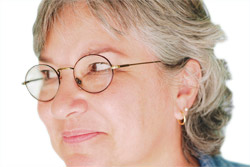
Menopause refers to the absence of menstrual bleeding for 12 months. It is natural and occurs because the ovaries stop producing oestrogen as a woman ages.
There are a number of stages of menopause and health professionals use specific terminology to refer to these different stages. Perimenopause refers to the period of transition from normal periods (menses) to menopause, in which hormone production fluctuates and menses occur irregularly and typically at longer intervals. It is often referred to as the menopause transition. Post-menopause begins 12 months after the final menstrual bleeding.
The hormonal changes which occur in the perimenopausal period and persist during post-menopause can result in a range of symptoms which often reduce a woman’s quality of life and wellbeing.
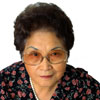 |
For more information about menopause, see Menopause.
|
What are hot flushes?

Like other symptoms of menopause, hot flushes are temporary and typically resolve within 2-6 years. However, in some women they can persist for decades, for reasons which are not yet understood. Typically, hot flushes begin in the perimenopausal period, when hormone levels begin to fluctuate and menstrual cycles become less regular. They usually persist until a year or more after menopause. Hot flushes are usually most severe in the 2-3 years before the final menstrual bleeding.
What do hot flushes feel like?
Hot flushes are characterised by an increase in body temperature and the woman feeling hot, usually uncomfortably hot. Women describe hot flushes as periods of intense flushing, heat and sweating, which begins in the faceand is often also felt in the neck and chest.Hot flushes are sometimes followed by chills.
Onset is rapid and a person experiencing a hot flush can feel uncomfortably hot for as little as a couple of seconds, or as long as a couple of hours. However, usually they only persist for 2-4 minutes. The physical changes which occur with hot flushes can mimic symptoms of anxiety or panic attacks.
Hot flushes may occur frequently (a dozen in an hour) or infrequently (just a couple of times a year). The severity of hot flushes also varies. Some women experience only mild hot flushes, while for others flushes may be severe enough to disrupt sleep. Hot flushes may also cause feelings of anxiety, heart palpitations and red skin blotches.
Prevalence of hot flushes in the menopausal period
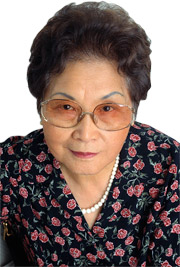
Some groups of women are more likely to experience hot flushes (or are at risk of experiencing more severe flushes). Women with breast cancer experience more frequent and severe hot flushes than other women because breast cancer therapy often also induces hot flushes. Risk also varies based on ethnicity and African-American women are more likely than their Caucasian counterparts to experience hot flushes. Hispanic, Japanese and Chinese women are less likely than Caucasian women to experience these symptoms.
Other women who appear to have an increased risk of vasomotor symptoms include:
- Women who experience menopause before 53 years of age;
- Women who experience menopause abruptly, for example whose menopause was induced by surgery or chemotherapy;
- Women who are overweight (with a body mass index (BMI) ≥27) and underweight (with a low BMI (<18.5));
- Women who have smoked at any time in their lifetime;
- Women who are not physically active;
- Women with a history of premenstrual complaints (e.g. depression, food cravings, pain);
- Women living in hot environments, as the core body temperature of these women is higher than of those living in cooler environments; and
- Women of low socio-economic status.
Risk also varies depending on whether or not the woman has had any children in her lifetime.
Why hot flushes occur
Hot flushes occur due to changes in the body’s thermoregulatory system, which regulates body temperature and maintains it within the thermoregulatory zone (e.g. between 36oC and 38oC). However, the specific causes of hot flushes are complex and not well understood.
As hot flushes occur at the same time as hormonal changes associated with menopause, it is thought that they are triggered by these hormonal changes. More specifically, it is hypothesised that the rapid decline in oestrogen which characterises the peri- and post- menopausal period causes oestrogen withdrawal. Hot flushes are thought to be a symptom of the rapid withdrawal of oestrogen (just as an individual withdrawing from drug or alcohol addiction may experience withdrawal symptoms), rather than low oestrogen levels (as hot flushes resolve in the post-menopausal period when oestrogen levels remain low).
The action of hormones which play a role in regulating the body’s temperature (including nonepinephrine and serotonin) are also influenced by levels of oestrogen in the body. Thus, declining oestrogens levels at the time of menopause are also thought to induce hot flushes by influencing the action of nonepinephrine and serotonin.
There is some evidence that women who have a narrower thermoregulatory zone compared to other women are more likely to experience hot flushes, as their bodies are more sensitive to temperature change.
Other possible causes of hot flushes

- Thyroid diseases (diseases of the hormone-producing thyroid gland);
- Epilepsy;
- Pancreatic tumours;
- Leukaemia;
- Auto-immune diseases (diseases which cause the body to produce antibodies that fight its own tissues, that is, the body produces an immune response against itself and attacks its own cells);
- Mast cell disorders (disorders of the mast cells, or the cells which release chemicals such as histamine in response to allergen exposure);
- Pheochromocytoma (tumour of the adrenal gland);
- Carcinoid syndrome (a condition which occurs in individuals with bowel tumours, it causes diarrhoea, pain, heart damage and heartbeat irregularities);
- Panic disorder;
- Diabetes and insulinoma (a condition characterised by hypoglycaemia or lack of blood sugar, it occurs as a result of benign tumours of the pancreas).
Some medications are also associated with hot flushes including:
- Tamoxifen (used in breast cancer treatment);
- Raloxifene (used in breast cancer treatment);
- Diltiazem (used to treat hypertension);
- Nicotinic acid (also known as niacin, it is a form of vitamin B which regulates the nervous system and the digestive system);
- Levodopa (used in the treatment of Parkinson’s disease);
- Bromocriptine (used in the treatment of Parkinson’s disease);
- Selected serotonin reuptake inhibitors (antidepressants).
Impact of hot flushes
Hot flushes and other symptoms of menopause are not life threatening but they may cause distress and affect a woman’s quality of life. They can affect psychological health and cause mild depression, irritability and mood changes. They may also reduce the quality of a woman’s sleep or interfere with her work or social life.
Measuring the severity of hot flushes
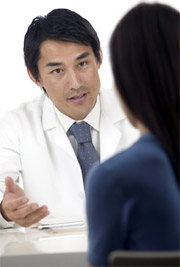
- The Kupperman Index;
- The Greene Climaracteric Scale (climaracteric meaning menopausal);
- The Women’s Health Questionnaire; and
- The Menopause Specific Quality of Life Questionnaire.
However, the doctor may not need to use a questionnaire. Often it is possible for the doctor to assess the severity of hot flush symptoms simply by asking questions. Laboratory tests (e.g. blood or urine tests) are not usually necessary to evaluate hot flush symptoms, although they may be instituted if the doctor suspects that the hot flushes are caused by something other than menopause.
How hot flushes can be treated
Lifestyle modifications are usually the first form of therapy recommended for the treatment of mild symptoms of menopause. There are also numerous pharmacological and herbal therapies which can be used to treat the symptoms of menopause. It is important to note that these may not be appropriate for women with surgically or chemically induced menopause (as opposed to natural menopause). They are also unsafe for some women to use.
It is common for women to use a combination of therapies to treat their menopausal symptoms. For example, they may use hormone replacement therapy for some symptoms and herbal remedies for others. It is very important that women inform their doctor about all the treatments (including natural treatments) they are using to relieve menopause symptoms. Women should also ensure they receive information about the potential dangers of natural remedies.
Lifestyle modifications

- Maintain a healthy diet with a high calcium and low fat content;
- Reduce caffeine consumption;
- Reduce alcohol consumption to no more than 1-2 standard drinks per day;
- Get at least 30 minutes of exercise per day;
- Quit smoking;
- Have support from friends and family; and
- Identify and deal with any problems with intimate relationships which may be affecting emotional health.
In addition, relaxation, either using relaxation techniques or yoga, may be useful in terms of reducing menopausal hot flushes, although there is currently insufficient evidence to demonstrate conclusively that relaxation improves hot flushes.
Pharmacological treatments
Hormone replacement therapy
Hormone replacement therapy (HRT) is a treatment for menopausal women in which exogenous (external) oestrogen is administered. Combining oestrogen with progesterone reduces the risk of endometrial cancer compared to administering oestrogen alone. As such, all women who have not had their uterus (womb) removed by hysterectomy (i.e. all women at risk of endometrial cancer) are prescribed a medication containing both progesterone and oestrogen if they use HRT.
The primary reason that most women use HRT during menopause is for relief of hot flushes. Medications containing oestrogen and progesterone (e.g. Estalis, Angeliq, Femoston) are effective in relieving hot flush symptoms in 75% of menopausal women. However, symptoms often recur when HRT ceases.
Testosterone or other synthetic hormones are sometimes also combined with oestrogen or oestrogen-progesterone. However, there is no evidence that either testosterone (e.g. Andro-feme cream) or synthetic hormones (e.g. Livial, Xyvion) in addition to oestrogen-progesterone, increases the effectiveness of the medication for relieving vasomotor symptoms (although testosterone and other hormones increase effectiveness of oestrogen-progesterone for relieving sexual symptoms).
When HRT is prescribed to treat hot flashes, the medication is usually provided in the form of tablets, which affect the whole body. Skin patches which enable the hormones to enter the blood stream transdermally (across the skin) may also be used in HRT for hot flashes. As with tablets, the hormones are absorbed systemically, that is, they affect the whole body. On the contrary, when HRT is prescribed to treat sexual symptoms, hormone-containing creams which are applied the vagina are typically used. The application of cream provides additional oestrogen to the vaginal cells, but the concentrations used are too low to effect the while body.
HRT is individualised by the prescribing doctor, considering the relative risks and benefits for each woman. The lowest possible dose of hormones capable of relieving symptoms is used, as this reduces the risk of side effects, including potentially serious side effects like increased cancer risk. As the therapy involves risk, all women must provide their informed consent to use HRT, after the prescribing doctor has provided detailed information about the relative risks and benefits of the therapy.
Antidepressant medication
Some antidepressant medications also reduce hot flushes. While these medications are not as effective as HRT, antidepressant medication may be used by women who cannot use HRT (e.g. women with hormone dependent cancers, that is, cancers that will grow more quickly in the presence of additional hormones).
Antidepressant medications used to treat hot flushes include venlafaxine (Efexor-XR) and paroxetine (e.g. Aropax, Extine). Available evidence shows that antidepressants are effective for relieving hot flushes in the short term, although data demonstrating their effectiveness in the long term is lacking.
Antihypertensive agents
The antihypertensive drug methyldopa (e.g. Aldomet, Hydopa) has been demonstrated effective in reducing hot flush symptoms in menopausal women. However, due to its associated side effects and the availability of safer therapies, methyldopa is not recommended for the treatment of vasomotor symptoms of menopause.
Dehydropiandrosterone (DHEA)
Results from small randomised trials have shown significant reductions in hot flush symptoms of post-menopausal women treated with DHEA. However, further large trials are required to confirm these results. DHEA is not currently available in Australia.
Natural remedies

Potential dangers of natural remedies
Like pharmacological treatments, natural therapies can have side effects, including potentially fatal conditions such as anticonvulsant hypersensitivity syndrome (a rare syndrome associated with the use of some remedies, symptoms include fever and rash) which has been reported following treatment of menopausal hot flushes with the herbal remedy Belladonna (extract of the Eurasian plant Belladonna).There are other potentially dangerous effects. For example, dong quai, a Chinese plant used to treat vasomotor symptoms of menopause has oestrogenic properties, which may mean that it is not safe for use in cancer patients. In addition, dong quai may cause bleeding if used concomitantly with warfarin (an anticoagulant medicine which thins the blood).
Other natural remedies also have the potential to interact with prescribed and over-the-counter medicine, but few studies have been conducted to determine how and with which medications, herbal remedies interact. It is therefore important that women wanting to use herbal remedies consult a doctor prior to use, about their potential side effects, so that their effects can be considered in relation to other medications being used.
Adverse side effects are of particular concern for women with a history of breast or other hormone dependent cancers, as the safety of many natural therapies has not been determined for this group of women. Women with a history of cancer should consult their oncologist before starting natural menopause therapies.
Safety and efficacy data for herbal remedies
Women considering using natural remedies to treat menopausal hot flushes should be aware that there is a lack of evidence about the effectiveness of most natural remedies for the relief of vasomotor symptoms of menopause. Few good quality scientific studies have been conducted to compare natural remedies to pharmacological therapies or no treatment. Where studies exist they are typically small and of low quality and many studies have shown no improvement in menopausal symptoms in groups treated with natural remedies.
Herbal remedies which have been used to treat menopausal hot flushes include:
- Lachesis mutus (a venomous snake);
- Belladonna (Bellergal, Bellamine) – despite being a herbal remedy a prescription is required for this product;
- Sepia officinalis (cuttlefish);
- Sulphur;
- Sanguinaria canadensis;
- Black cohosh (Cimicifuga racemosa);
- Evening primrose oil (Oenothera biennis
- Dong quai (Angelica sinesis);
- Ginseng (Panax ginseng);
- Wild yam (Dioscorea villosa);
- Vitamin E.
Phyto-oestrogens
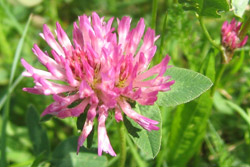
- Isoflavones: found in legumes (red clover, chickpeas, lentils) and soy products (although it is important to note that some of the benefits may be lost through manufacturing); and
- Lignans: found in fruits, vegetables, seeds (linseed) and cereals (oats, barley).
There is some evidence that phyto-oestrogens are effective in reducing menopausal hot flushes. Scientists initially became interested in the role of phyto-oestrogens in preventing menopausal hot flushes when they noticed that Asian women (who consume far greater quantities phyto-oestrogen than women in other countries) were found to have much lower rates of menopausal hot flushes. Some 10-20% of menopausal women in Asia experience hot flushes compared to >70% on the United States. However, the Asian diet differs from a Western diet in many other ways (e.g. higher fish intake) which may account for the lower prevalence of hot flushes amongst Asian women.
Results from scientific studies in which women received isoflavone red clover to treat hot flushes have been conflicting. Further research is needed to determine whether it is effective.
For other phyto-oestrogens, including soy isoflavone extracts and soy dietary supplements, there is currently insufficient evidence to determine whether they are effective.
Acupuncture
One randomised controlled trial showed that acupuncture may be effective in significantly reducing the frequency and intensity of hot flushes. However, in most trials acupuncture has not significantly improved hot flush symptoms in menopausal women.
Hypnosis
Hypnosis has shown promise in relieving menopausal hot flushes. However, the trials in which it has been assessed were small and further, large trials are needed to determine the effectiveness of hypnosis as a treatment for hot flushes.
Homeopathy
Homeopathy uses naturally grown herbs which induce symptoms similar to the condition being treated, in order to stimulate the body to heal itself. Treatment is determined on an individual basis, considering the individual’s overall health and personal circumstances. This means that people with the same conditions, may receive different treatments.
The medicines used in homeopathy are prepared by diluting a substance containing a natural active ingredient (e.g. sepia) many times over. In many cases the solution is diluted to such an extent that no detectable concentration of the active ingredient remains.
While homeopathy is commonly used to treat menopausal symptoms, there is limited evidence that it is effective. As the medicines used in treatment often contain no detectable traces of the active ingredient, some practitioners argue that any benefits experienced following homeopathic treatment are purely a placebo effect, that is, the patient’s condition improves not because of the medicines provided, but because of the healing effect of consulting with and receiving attention from the homeopath.
Tips for managing hot flushes
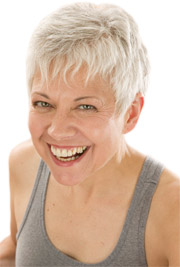
- Keep the body cool;
- Have a cool drink;
- Use the fan to cool off;
- Have a cool shower to cool off;
- Dress in layers so that it is easy to remove some clothing when a hot flush is experienced;
- At night, try getting out of bed and having a cool drink when you experience a night sweat – this may help the hot flush to go away more quickly;
- Breathe deeply and relax when you experience a hot flush;
- Run your wrists under cold water;
- Remember that life events, such as kids leaving home or stress at work can impact on menopause symptoms and make them more difficult to deal with. If you have concerns about broader aspects of your life, you should consider talking to a health professional. Also make sure you have help and support from friends and loved ones who know what you’re going through;
- Avoid foods and beverages that trigger hot flushes (e.g. spicy foods);
- Use cotton sheets and sleep in a cool room.
More information
 |
For more information on menopause, including symptoms and management of menopause, as well as some useful animations and videos, see Menopause. |
References
- Nelson HD, Haney E, Humphrey L, Miller J, Nedrow A, Nicolaidis C, et al. Management of menopause-related symptoms. Agency for Healthcare Quality and Research. 2005. [cited 2010, July 13]. Available from: URL link
- North American Menopause Society. Estrogen and progestogen use in postmenopausal women: 2010 position statement of The North American Menopause Society. Menopause. 2010;17(2):242-55. [Abstract]
- Fact sheet: Menopause [online]. Clayton, VIC: The Jean Hailes Foundation for Women’s Health; October 2009 [cited 12 July 2010]. Available from: URL link
- Burbos N, Morris E. Menopausal symptoms. BMJ Clin Evid. 2010; 2: 804.
- Grady D. Clinical practice. Management of menopausal symptoms. N Engl J Med. 2006;355(22):2338-47. [Full text]
- Symptoms- Hot flushes/night sweats [online]. Clayton, VIC: The Jean Hailes Foundation for Women’s Health; 19 May 2008 [cited 2010, July 13]. Available from: URL link
- Pachman DR, Jones JM, Loprinzi CL. Management of menopause-associated vasomotor symptoms: current treatment options, challenges and future directions. Int J Women’s Health. 2010: 2: 123-35. [Abstract]
- BMJ Group. Menopause- what is it? BMJ Patient Leaflet [online]. 2009. [cited 2010, July 13] Available from: URL link
- Emotional health at midlife and menopause [online]. Clayton, VIC: The Jean Hailes Foundation for Women’s Health; November 2009 [cited 2010, July 13]. Available from: URL link
- Basson R, Berman J, Burnett A, et al. Report of the international consensus development conference on female sexual dysfunction: definitions and classifications. J Urol. 2000;163(3):888-93. [Abstract]
- Menopause Therapy: Hormone therapy [online]. Clayton, VIC: The Jean Hailes Foundation for Women’s Health; 11 December 2007 [cited 2010, July 13]. Available from: URL link
- Bordet MF, Colas A, Marijnen P, et al. Treating hot flushes in menopausal women with homeopathic treatment- results of an observational study. Homeopathy. 2008; 97(1):10-15. [Abstract]
- Borud EK, Alraek T, White A, et al. The acupuncture on hot flushes among menopausal women (ACUFLUSH) study, a randomised controlled trial. Menopause. 2009; 16(3): 484-93. [Abstract]
- The Jean Hailes Foundation for women’s health. Managing menopause. 19 June 2008 [cited 2010, July 13]. Available from: URL link
- Society of Obstetricians and Gynaecologists of Canada. Clinical Practice Guidelines- Menopause. J Obs Gynaecol Canada. 2006; 28: S7-S92.
- Cobin RH, Futterweit W, Ginzburg SB, et al. American Association of Clinical Endocrinologists. Medical Guidelines for Clinical Practice for the diagnosis and treatment of menopause. Endocr Pract. 2006;12(3):315-37. [Full text]
- Royal College of Nursing. Complementary approaches to menopausal symp toms- Guidance for RCN nurses, midwives and health visitors. 2006. [cited 2010, July 25]. Available from: URL link
- Turner RB, Kim CC, Streams BN, et al. Anticonvulsant hypersensitivity syndrome associated with Bellamine S, a therapy for menopausal symptoms. J Am Acad Dermatol. 2004;50(5 Suppl):S86-9. [Abstract]
- American College of Obstetricians and Gynaecologists. Herbal products for menopause. 2003. [cited 2010, July 28]. Available from: URL link
- Carroll DG. Non-hormonal therapies for hot flushes in menopause. Am Fam Phys. 2006; 73(3): 457-64. [Full text]
- Royal Australian and New Zealand College of Obstetricians and Gynaecologists. Management of the Menopause. 2008. [cited 2010, July 30]. Available from: URL link
- National Institutes of Health. Homeopathy- an introduction. July 2009. [cited 2010, July 30]. Available from: URL link
- Bancroft J, Williamson L, Warner P, et al. Perimenstrual complaints in women complaining of PMS, menorrhagia and dysmenorrhoea: towards a dismantling of the premenstrual syndrome. Psychosom Med. 1993; 55(2): 133-45. [Full text]
- Politi MC, Schleinitz MD, Col NF. Revisiting the duration of vasomotor symptoms of menopause. J Gen Intern Med. 2008; 23(9): 1507-13. [Full Text]
- Bachman GA. Menopausal vasomotor symptoms: a review of causes, effects and evidence-based treatment options. J Reprod Med. 2005. 50(3): 155-65. [Abstract]
All content and media on the HealthEngine Blog is created and published online for informational purposes only. It is not intended to be a substitute for professional medical advice and should not be relied on as health or personal advice. Always seek the guidance of your doctor or other qualified health professional with any questions you may have regarding your health or a medical condition. Never disregard the advice of a medical professional, or delay in seeking it because of something you have read on this Website. If you think you may have a medical emergency, call your doctor, go to the nearest hospital emergency department, or call the emergency services immediately.







